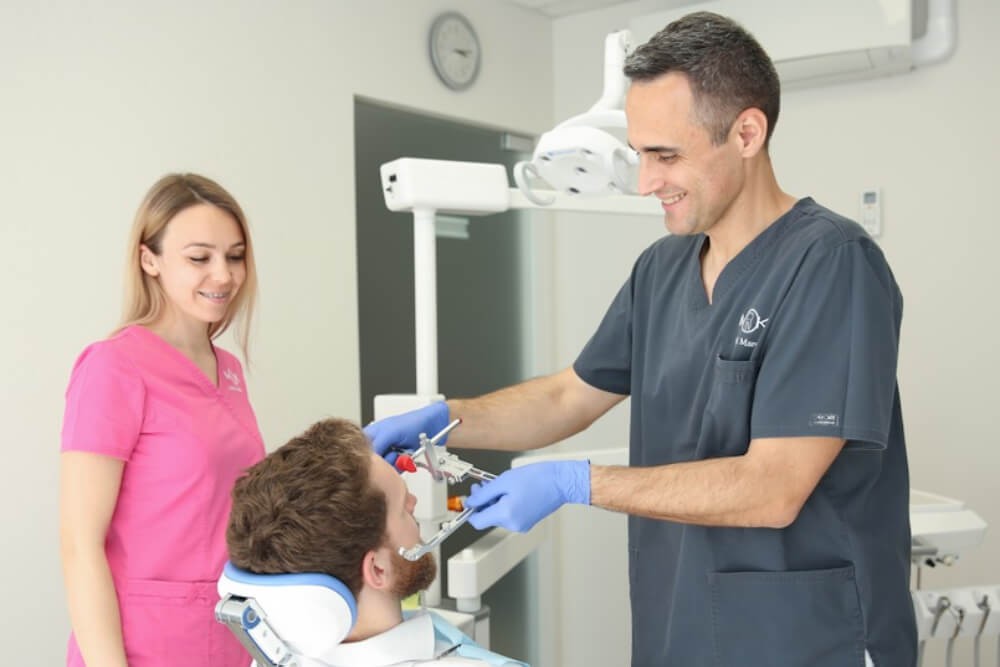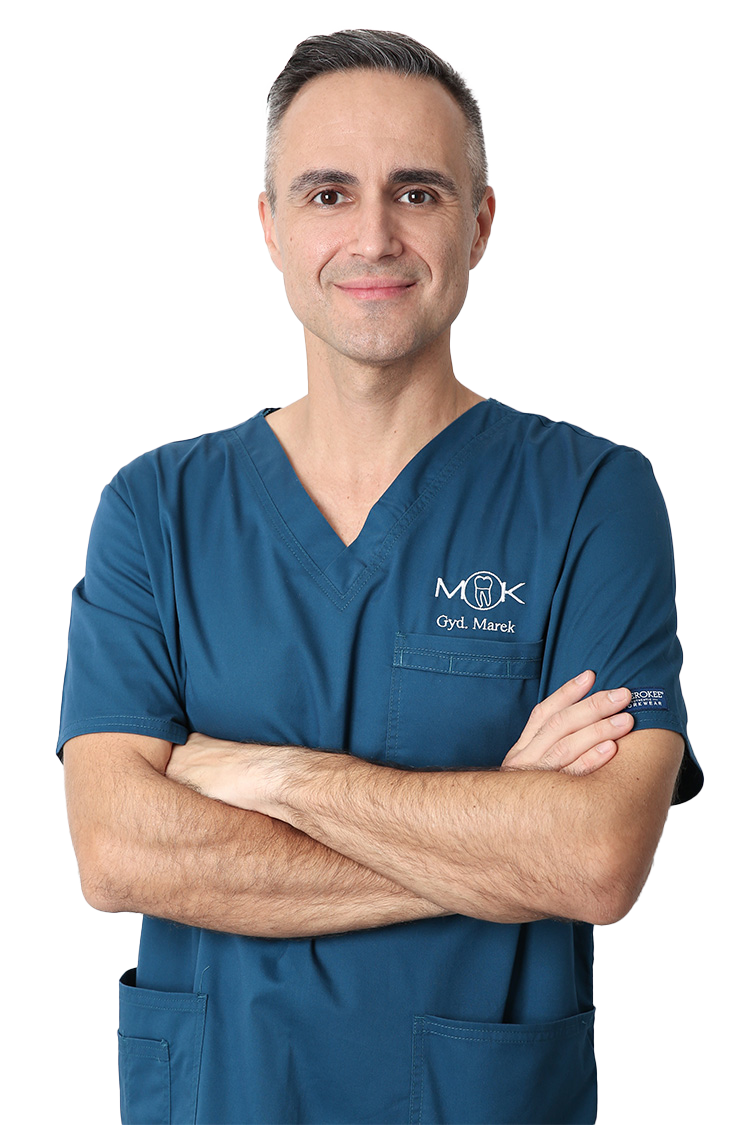Temporomandibular joint disorders may occur for a variety of reasons, including psychological factors, irregular occlusion, improper fillings or prostheses, when the anatomical structures of teeth have not been accurately restored, and might also be congenital. Dysfunction of the joint can be suspected from the following symptoms: clicking sound, pain or locking of the jaw while opening mouth, headaches. If You notice any of these signs, You should arrange an appointment with Your dentist. Your doctor will evaluate the degree of jaw joint disorder and use modern treatment methodologies to help resolve the problem.
Is it necessary to treat temporomandibular joint disorders?
Disorders of the temporomandibular joint do not simply go away. Untreated disease may affect the condition of patient’s bite and the whole body as well. Joint disorders have specific indicators, like difficulty and pain while opening mouth, unpleasant clicking sound in the joint area, tinnitus. In addition, there is tension or pain in the chewing muscles, mouth opening becomes limited, eating and smiling causes discomfort.
Treatment
 1st method. Miorelaxation splints
1st method. Miorelaxation splints
Temporomandibular joint disorders often result from involuntary tooth grinding. Bruxism affects not only one’s teeth but also the joint, as the chewing muscles and ligaments are constantly stretched and the internal joint structures are pressed. Wearing of individually made splints, allows to relax masticatory muscles and jaw joint, teeth are protected from pathological wear.
2nd method. Orthodontics
Irregular occlusion can interfere with the proper function of the chewing muscles and joint ligaments. Orthodontic bite correction often helps to get rid of constant tension and pain in the joint area.
3rd method. Prosthetics
Severely worn bite due to bruxism may initiate the disorders of temporomandibular joint. Damaged teeth must be restored with anatomically accurate prostheses, thus regaining smile aesthetics and functional occlusion.
4th method . Combined treatment
In more complex cases, a team of physicians needs to be gathered. Treatment of temporomandibular joint disorders may require help of several specialists: a dentist, a physiotherapist, a neurologist.



